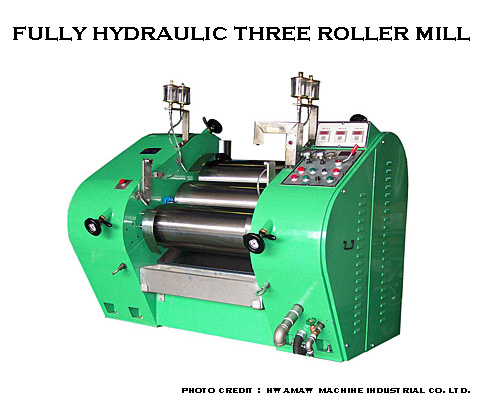Roller mill is a form of compression mill that uses a single, double, or triple cylindrical heavy wheel mounted horizontally and rotated about their long axis either in opposing pairs or against flat plates, to crush or grind various materials. One of the rollers is run by a motor and the others are rotated by friction as the material is drawn through the gap between the rollers.
Roller mills use the process of stress (which is applied by the rotating wheels) and attrition in milling of solids in suspensions, pastes or ointments, and some solid materials. The rollers rotate at different speeds and the material is sheared as it passes through the gap.
To obtain the desired particles size, the following should be controlled;
The design of a roller mill differs depending upon its application and they are usually named according to the work they perform e.g;
Two variants of roller mill are recognized and they are;
a. Multiple or corrugated rollers
b. Ribbed or saw-toothed rollers.

Contents
1. It is used in the preparation of ointment; paste, creams, and other semi-solid preparations.
2. Roller mills are used for crushing seeds prior to extraction.
1. Produce more uniform, fewer fines, and oversized particles when it comes to product quality.
2. Generates less heat (0 – 3 0C) unlike hammer mill that generates up to 10 0C
3. Less moisture loss
4. Better work environment due to low machine noises level
5. It is energy efficient/energy saving
6. Reducing working hazard due to dust generation from the milling material.
1. Not effective on fiber or two-dimensional products. Works best on easy to grind materials like corn, cereal grains, etc.
2. Additional operator inputs are required since the rolls need to be adjusted to suit grind requirements.